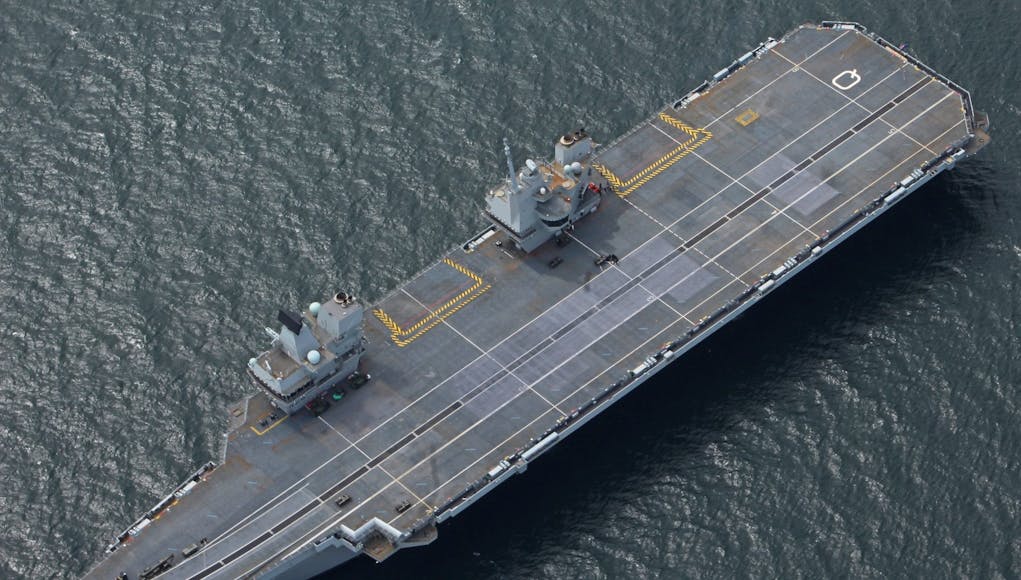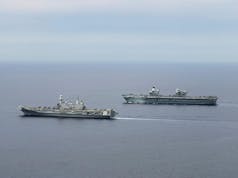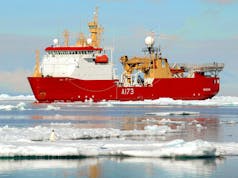The Aircraft Carrier Alliance have published insight into how HMS Queen Elizabeth turns seawater into fresh water.
With the vessels designed around 9 month deployments, they require access to fresh water for their 700+ strong crew.
“To ensure the crew has a supply of fresh water while at sea, a £1 million reverse osmosis system draws in sea water and produces 540 tonnes of fresh water a day.
Reverse osmosis is the process by which high pressure is applied to saltwater, pushing it through a semi-permeable membrane. Due to the size of the salt molecules, only smaller water molecules can pass through the membrane, resulting in fresh water.
Three reverse osmosis plants have been providing the crew and industry workforce on board HMS QUEEN ELIZABETH with fresh water while the ship has been undergoing her maiden sea trials. This is the largest scale use of the system on a Royal Navy ship.
The reverse osmosis plants have the capability of taking in saltwater and transforming it into fresh water at a rate of 175mᶟ per day – enough to fill nearly 12,000 bath tubs – and will be enough to meet the demands of up to 1,600 embarked personnel. The fresh water produced and stored on board the Queen Elizabeth Class carriers each day will equate to approximately 175,000 litres, which is around six times the capability of a normal vessel. The water can not only be used for drinking, but for cooking, showers, dishwashers and general ship husbandry.
The three plants have been developed to run completely autonomously, requiring minimal input from the operating crew. The system is unique in that it can also dispose of the water used on board cleanly and safely through an additional filtration unit, which purifies the water on exit from the ship. This function could also be utilised in the future for humanitarian operations, delivering clean and filtered water to those in need of it.”
Engineering Technician (Marine Engineering) David Carey, is one of the crew members responsible for the ship’s fresh water and reverse osmosis plants:
“In the morning we carry out daily checks and also preventive maintenance on all of our equipment, to keep machinery running smoothly.” ET (ME) Carey told us. “For me, the major event after HMS QUEEN ELIZABETH sailed was the commissioning of the reverse osmosis plants which allow the ship to make its own fresh water.
This was achieved with the help of a company called Salt Separation Services, who helped to set the three reverse osmosis plants to work. It was a challenging task but now allows HMS QUEEN ELIZABETH to produce 540 tonnes of her own fresh water a day.”














The only thing you need to ask yourself about any system on a Royal Navy ship in the 21st century is, ‘Yes sounds really good but will it work in a hot climate without breaking down’?
Zzzzzzzzzzzzzzzzzzzzz
Why do I need to ask myself this? It’s not clear in your statement.
RO water is, to all intents, the same as demineralised water. Lack of minerals in drinking water is not good for humans (a few years ago there was a fad for drinking demin water that killed several people. Do they add calcium/magnesium salts to the drinking water?
The product water on leaving the RO plant goes through a re- mineralizer usually containing limestone
Yes they do have a Demin tank te replenish minerals removed during the process.
John west
Once it goes through the reverse osmosis system it goes through another vessel that Re hardens the water putting the minerals back in making it drinkable
A while back there was a programme on tv following one of the LPDs, either Albion or Bulwark, I can’t remember which. She spent some time exercising with the Indians and Bangladeshis in the Bay of Bengal and experienced problems with her water intakes when close inshore, due to the very large amount of silt carried out to sea by the Ganges blocking them. I hope they included some powerful centrifugal separators in the QZ to overcome this potential problem.
So let’s do some simple maths. If 1 litre of water equates to 1kg, 1000 litres equals 1000kg. If the RO kit can turn over 175,000 litres of seawater, doesn’t that equate to 175,000 kg’s (175 tonnes). So I assume she can make 540 tonnes of freshwater but only store 175 tonnes?
George, “The fresh water produced and stored on board the Queen Elizabeth Class carriers each day will equate to approximately 175,000 litres”…. That’s just for one of the converters, rather than the total yes? If the QE can produce 540 tonnes of fresh water per day, then that’s ~540,000 litres (sea temp makes a difference, but close enough), not far off 3×175,000…
With only 175,000 litres, your 12,000 baths are only going to have about 14 litres in them. I’d prefer a quick shower.